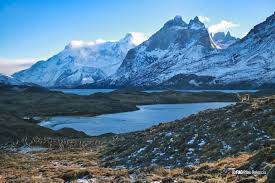Plastic Pollution Solutions: Tackling Marine Debris in North American Waters
Introduction:
Marine pollution is a pressing issue that affects the delicate ecosystems of North and South America. One of the major contributors to this problem is plastic debris, which poses a significant threat to marine life and the environment. In this article, we will explore effective solutions to combat plastic pollution in North American waters, highlighting the importance of addressing contemporary climate and environmental issues.
The scale of the problem:
Plastic pollution has reached alarming levels in North American waters, with millions of tons of plastic waste entering the oceans each year. This not only endangers marine life but also poses a threat to human health as microplastics enter the food chain.
Understanding the impact:
Plastic debris can entangle marine animals, leading to injury and death. Ingestion of plastic can cause blockages in their digestive systems, malnutrition, and hormonal disruptions. Additionally, plastic pollution affects coastal communities that rely on the ocean for their livelihoods, such as fishing and tourism.
Promoting responsible consumption:
Reducing plastic waste starts with each individual making conscious choices. Opting for reusable bags, bottles, and containers can significantly reduce the amount of single-use plastic that ends up in our oceans.
Recycling and waste management:
Improving recycling facilities and implementing effective waste management systems are crucial steps towards combating plastic pollution. Government initiatives and partnerships with private sectors can play a pivotal role in establishing comprehensive recycling programs.
Education and awareness:
Raising awareness about the impact of plastic pollution is key to engaging individuals and communities. Educational programs in schools, public campaigns, and social media initiatives can all contribute to fostering a sense of responsibility towards the environment.
Innovative solutions:
Technological advancements provide solutions to tackle plastic pollution. For example, companies are developing biodegradable alternatives to single-use plastics, such as plant-based packaging and compostable materials.
Supporting research and innovation:
Investing in scientific research and innovation is vital to developing effective methods of tackling plastic pollution. Governments and private organizations should collaborate with scientists and researchers to discover innovative solutions, such as ocean cleanup technologies.
Strengthening regulations:
Governments should enforce stricter regulations on the production, use, and disposal of plastics. Implementing policies such as plastic bag bans, extended producer responsibility programs, and plastic waste reduction targets can have a significant impact.
International cooperation:
Plastic pollution is a global issue that requires international cooperation. North and South American countries should collaborate to share best practices, exchange knowledge, and develop joint initiatives to address plastic pollution in their shared waters.
Supporting local initiatives:
Communities across North and South America are taking the initiative to combat plastic pollution locally. Supporting local organizations and grassroots movements that promote recycling, clean-up campaigns, and sustainable practices is essential to create a lasting impact.
Harnessing the power of technology:
Online platforms and mobile applications are emerging as powerful tools to connect individuals, organizations, and initiatives focused on addressing plastic pollution. Leveraging technology can streamline efforts and foster collaboration.
Investing in infrastructure:
Improving waste management infrastructure, including recycling facilities and proper disposal systems, is a crucial step towards preventing plastic waste from entering our oceans. Governments should prioritize these investments to create a more sustainable future.
Empowering the youth:
Engaging and empowering the younger generation is vital to creating lasting change. By providing educational opportunities, encouraging youth-led initiatives, and amplifying their voices, we can inspire a new wave of environmental leaders dedicated to tackling plastic pollution.
Conclusion and call to action:
The battle against plastic pollution in North and South American waters requires collective effort and commitment. By adopting responsible consumption habits, supporting recycling initiatives, advocating for stricter regulations, and fostering international cooperation, we can make a tangible difference. It is up to each and every one of us to take action and protect our precious marine ecosystems. Let us unite and work together towards a plastic-free future. Join the movement today and share this article to spread awareness and inspire change. #PlasticPollutionSolutions #NorthSouthAmericaUnity #ClimateAndEnvironmentSolutions







No comments yet. Be the first to share your thoughts!